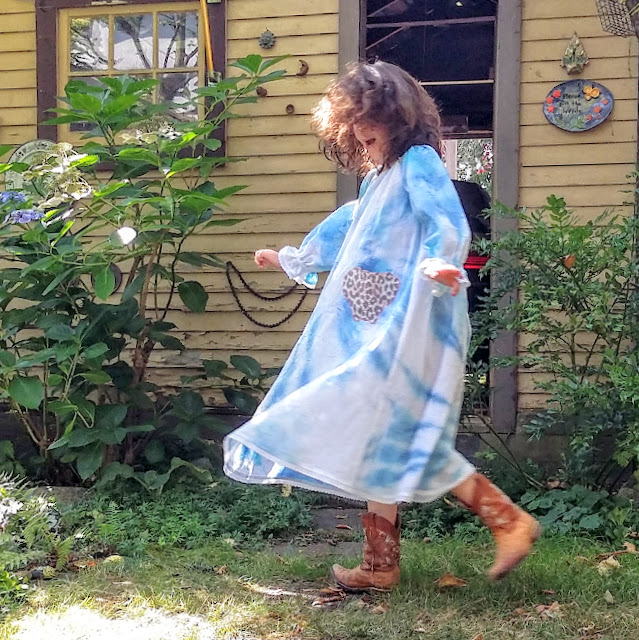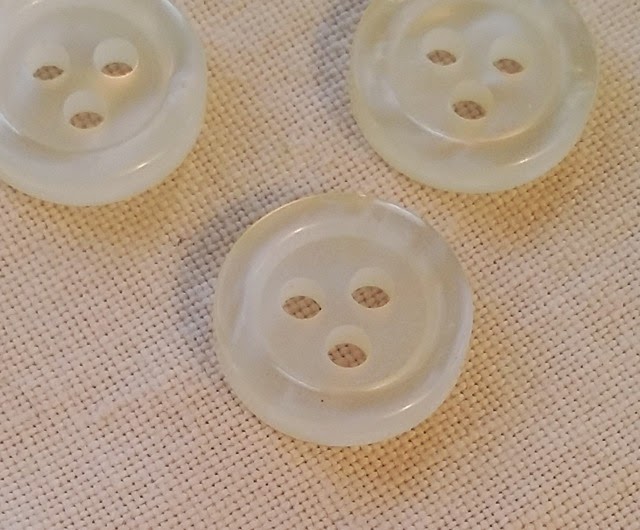 |
| Polyester double-knit: all the optimism of the hippy movement, in easy-care wash-and-wear |
Background
 |
Twiggy - swinging girl
|
Here's a puzzle: what to do with a large garbage-bag full of too-small-to-bother scraps of Early Space-Age textiles. None big enough to be a pocket: they should have been chucked when all the pieces of the A-Line Twiggy dresses - and later, the plaid, Mary Tyler Moore pant suits - had been cut. But they weren't, and here they were, 50 years later, in a black plastic bag between my knees, as I sorted donations at
Our Social Fabric. An estate donation - I didn't know we had received it, so there hadn't been a chance to thank the donor, or ask my usual questions: who was she? What did she sew, and for whom?
I had only the clues in the one bag, and I wasn't learning much: she sewed. A lot. She liked colour, texture, plaid. She was fashionable, and - despite the unrestrictive fashions of the time - no doubt usually uncomfortable: nearly every scrap was 100%, non-breathing, abrasive-textured,
double-knit polyester. She must have been perpetually chafed and sweaty. But she looked good. If not a little pilly.
 |
Mary Tyler Moore - working girl
|
I wondered: was she
on the bus? Did she work? Did she love the Beatles? And why did she save those scraps? What was it about the pieces - too useless, even, for the OSF Free Bin - that caused her to keep them all, and for so long? Too small for garments, not absorbent enough for rags. Not for patches... polyester doesn't wear out. What was she expecting to do with them? I took them home to see if they could tell me their purpose. If not, I would have to throw them out.
It seemed wrong to chuck such hopeful fabric, when it had waited so long: hopeful colours, hopeful patterns, hope for equality, for love, peace and change. Hope for the future. With all that hope, could the pieces really be so hopeless? But there is nothing at all useful about a massive bagful of dinky, ugly, non-absorbent, abrasive, polyester off-cuts... except maybe to piece together like some wash-and-wear, perma-press, crazy quilt. Or something more useful... like a housedress... Or an apron... Or a
pop-over! Well! What else could I do?
 |
| The back - what a load of scraps! |
No scrap was altered in the making of this utilitarian, pull-over pinafore. What you see is exactly what I found in the bag: strange, jagged cuts; long, narrow strips; tapering slivers of psychedelic colours - the negative shapes that remained from making all those fabulous outfits. Three days' sifting produced the right interlocking pieces to accommodate the curved edge of the neckline, armholes and hem. Good thing I like puzzles.
Grain, the Music and Being on the Bus
But wait: there's more! The hang of a garment depends (almost) entirely upon the grain of the fabric, which, in the case of double-knit polyester, should run perpendicular to the floor. This made for tricky scraps placement. Not only did they need to conform to the outline of the pattern, but each piece had to be on grain to prevent wobble and twist. Luckily, there were lots to choose from, and I had Jake Bugg to keep me company!
 |
| Jake Bugg |
Jake Bugg: the young English singer who caused me to realize we may
not be going to Hell in a hand basket, after all. What a relief.
Instead, we are riding the same wave of hope the Beatles rode with everybody else who was on the bus - the Beatles so far in front they seemed to be pulling the wave. They channelled the zeitgeist of the time, providing a sound track to social change that was rooted in hope. That wave crashed, but now is cresting again, and with the aid of information technology it's many times more powerful. Artists like Jake Bugg and movements like Our Social Fabric are riding along with it. These are very hopeful times; we might just yet clean up the mess we're in.
Who is Jake Bugg? He is not his influences: the Beatles, the Everly's, Don McLean, Johnny Cash, Donovan, Neil Young or Hendrix. He is not Dylan, though I see the comparison. But he is special like them. He intrigues me for his honesty, modesty, sharp commentary on his own experiences, and his indifference to public opinion. Like the Beatles, the important thing is the music.
Read
the Rolling Stone review of Jake Bugg's first album
Listen to a song:
Broken (start at 53sec)
Pattern and Sewing
The design was done the usual way, by altering a flat-drafted pattern on a mannequin until it looked just right. However, the sewing is unconventional. There are none of the usual seams. The scraps fit together to form the 3-D shape, sewn edge to edge, without seam allowances. A whole lot of Solvy and
diagonal basting* was employed in the construction, as well as some old, abandoned rick rack, which provides the bust shaping and delineates the neckline and armholes. For
sewing nerd details, click here.
*You might be wondering: what is diagonal basting? It's a revelation, that's what: the best stitch ever for holding pieces exactly where you want them, prior to machining. It is also quick, and uniquely satisfying.
Pocket and Button
 |
| "Buttonhole test" pocket |
The hip pocket is made of a buttonhole test, found with the scraps. (What did she save
that for?!) The cheap-ola, plastic button - original dingy thread intact - came from a garment discarded decades ago. A new shank was created with special thread from a flight attendant - a friend of a friend - who flew in the days when stewardesses were required to be trained nurses and wore high heels and pillbox hats. On layovers she bought sewing goodies: silk buttonhole thread - lustrous and delightful for hand sewing. Some of the tiny spools are now mine.
Sewing the button on this top caused me to ponder
two ways to sew on buttons. One results in a tiny, recurrent thrill, and utilises a toothpick. The other is nifty and quick. Which one did I use?
Note to Jake
Thanks for reviving my optimism and for helping me finish this puzzle. More music please! I'll keep checking to see what you come up with next.

Size S-M. Available
For a hand-copied pattern, please contact me.



































